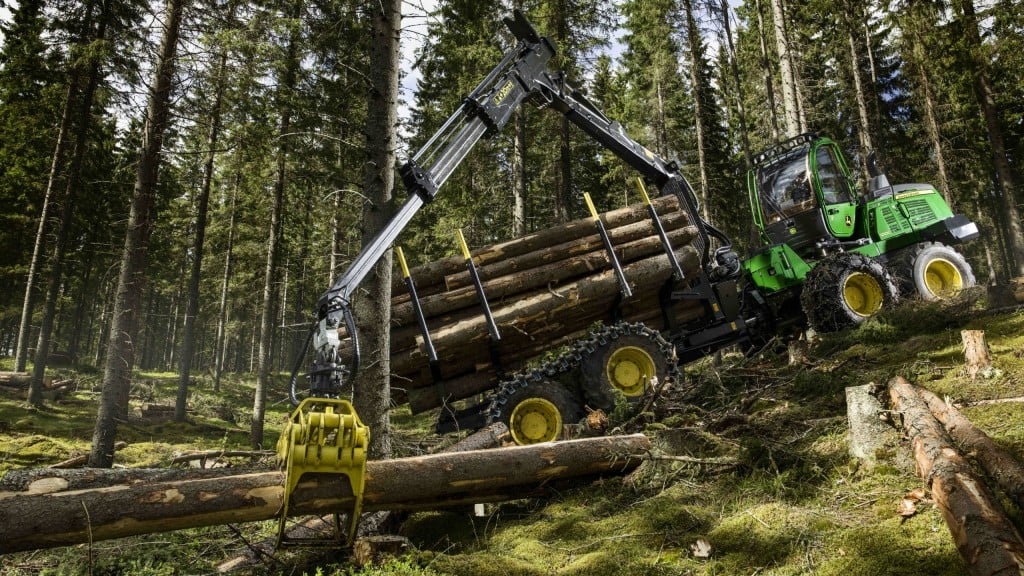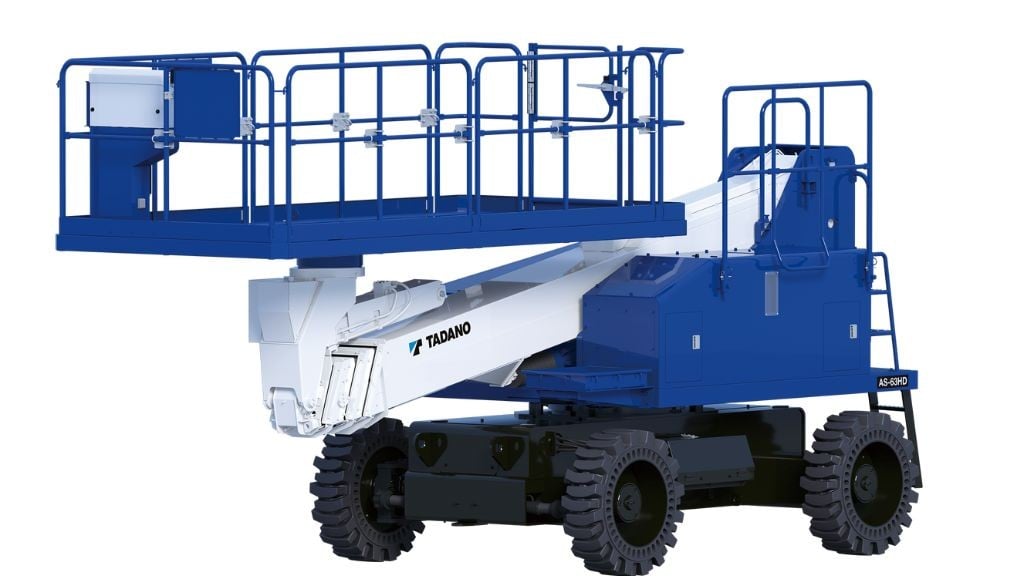Upgraded forwarders offer more power and precision for tough forestry jobs

John Deere has introduced three upgrades to its powerful Forwarder line. The 1110G, 1210G and 1510G models feature new engines, control modules, simpler CAN busses and a streamlined electrical system, providing loggers with the power and precision needed for tough jobs in the woods.
A key feature on the G-Series models is adaptive driveline control, a unique software-based control system that improves drivability and productivity. The operator selects the desired RPM setting (Eco, Normal, Power) for the operating conditions, and the system automatically adjusts the engine's RPMs to correspond with the engine load. In high-load situations, the new driveline control ensures that the diesel engine runs smoothly and uses the available maximum tractive force efficiently.
"Our G-Series Forwarders are designed with the operator in mind, incorporating several new features to help our customers be more productive," said Niko Solopuro, product marketing manager WCTL Forwarders and Automation. "We are dedicated to creating innovative solutions, like adaptive driveline control, that enable loggers overcome the challenges they face each day."
The 1110G, 1210G and 1510G models, as well as the rest of the John Deere Forwarder line, are available with Intelligent Boom Control (IBC), an innovative technology offering that simplifies boom operation, increasing operator productivity. IBC automatically controls the lift, slew, and extension of the boom based on the location of the grapple enabling more precise grapple positioning, especially with long reaches.
The new G-Series models feature a 6.8L John Deere PowerTech Plus engine, which meets the latest Stage 4/Final Tier 4 emissions regulations. Combined with the improved powertrain, the G-Series models offer enhanced performance. The control system and user interface has been improved to ensure machine uptime. The TimberMatic F-16 control systems features a configurable user interface, cruise control and inclination display. The new software version allows service advisors to remotely access the machine, streamlining troubleshooting. New MECA control modules, simple CAN busses and a simplified electrical system improve machine efficiency.
Ideal for thinning jobs, the 1110G boasts 6.6 percent more power and 4.1 percent more torque than the previous machine. Available with a short wheelbase, the rear axle on the 1110G has been moved forward by 40 cm (15.75 in), allowing the load space to remain unchanged.
Featuring 7.6 percent more power and 7.8 percent more torque than its predecessor, the 1210G offers several load space alternative with different widths for different uses. Optional Variable Load Space (VLS) offers three special bunks with telescopic stakes that can be extended hydraulically. The headboard is able to move both horizontally and vertically, and extends with the load stakes.
The 1510G machine is equipped with an engine that increases the machine power by 5.1 percent and torque by as much as 8.7 percent, increasing machine productivity. More agile than the previous model, the 1510G slewing angle has been increased from 42 to 44 degrees.
Both the 1210G and 1510G models are available in a long bogie version, ideal for soft terrain. The distance between the front and rear wheel hubs in rear bogie has been increased, and the power train and turning radius on the 1210G and 1510G models are the same as with the standard HD portal bogie-equipped machine. Additionally, the ground pressure of the rear chassis equipped with tracks is 14 percent less than an ordinary bogie axle. The low ground pressure on both the front and rear chassis of the machine makes it ideal for soft terrain, as the tracks are shallower and the depression is smaller. Additionally, the long bogie performs exceptionally in normal terrain, and brings stability when navigating over obstacles in rocky terrain.
Designed to improve operator comfort, the John Deere forwarders are available in two cab options, fixed or rotating and leveling. The rotating and leveling cabin helps the operator maintain the correct working posture, preventing stress on the back and shoulder areas, even on uneven terrain, and reduces vibration by as much as 30 to 50 percent during operation. The cabin can be rotated 290 degrees, offering a view of the boom and grapple for safer, easier log loading. Large windows allow virtually unrestricted all-around visibility. Additionally, fatigue-beating enhancements, like comfortable ergonomic armrests, fully adjustable air-cushioned seat and automated climate-control system, ensure that the operator remains productive throughout the day.



